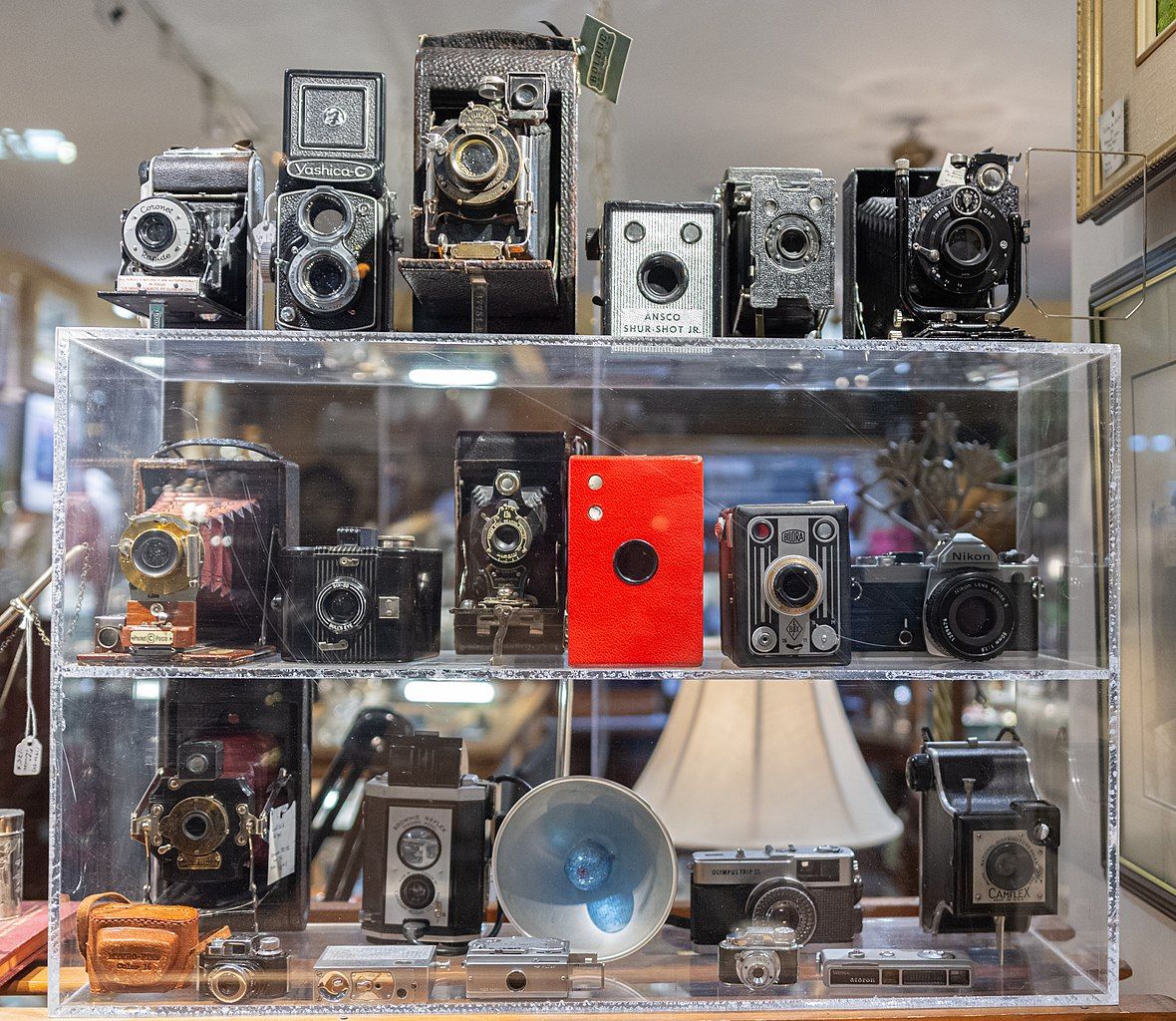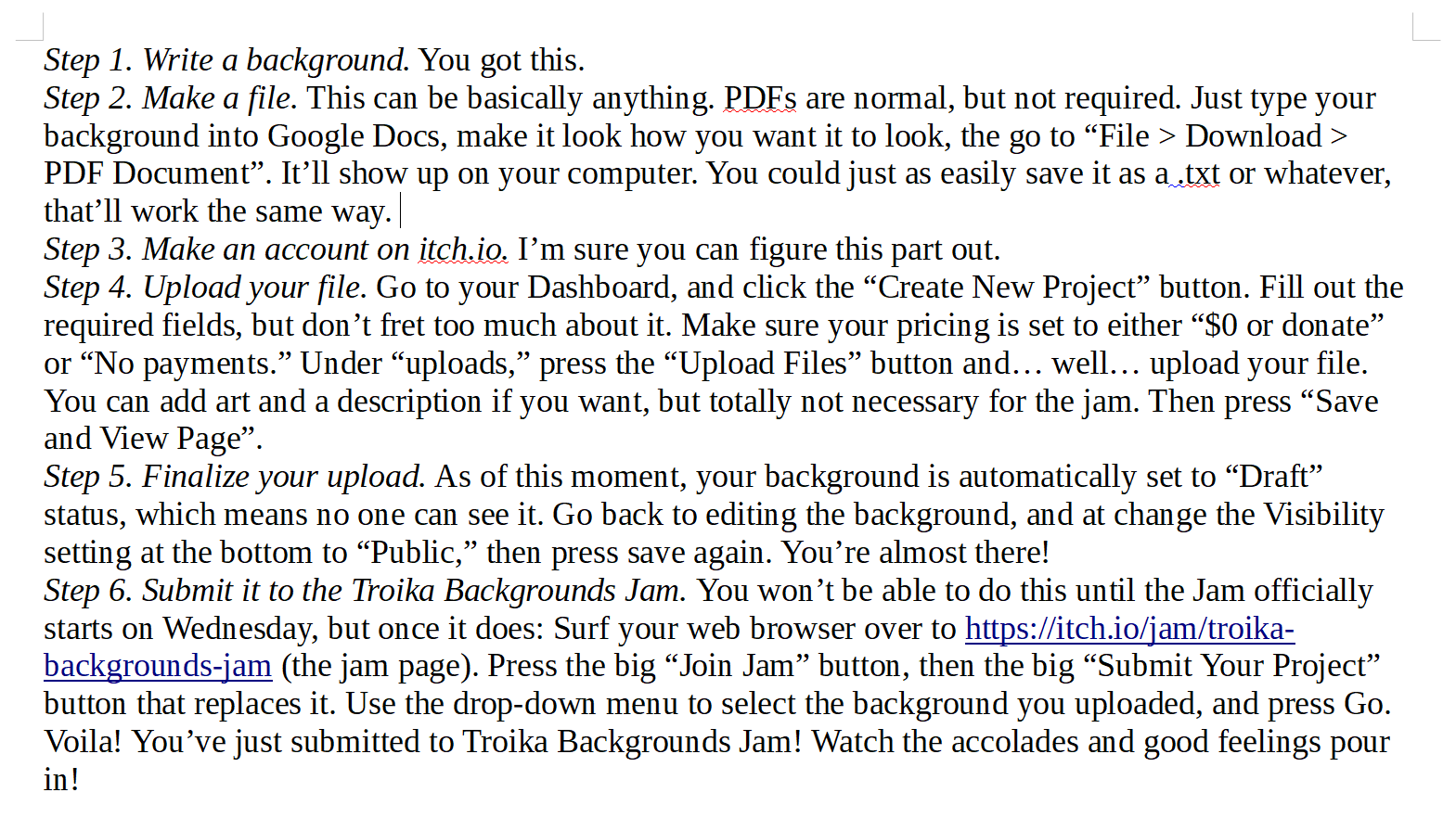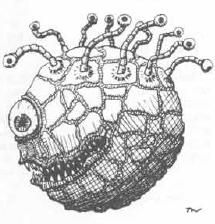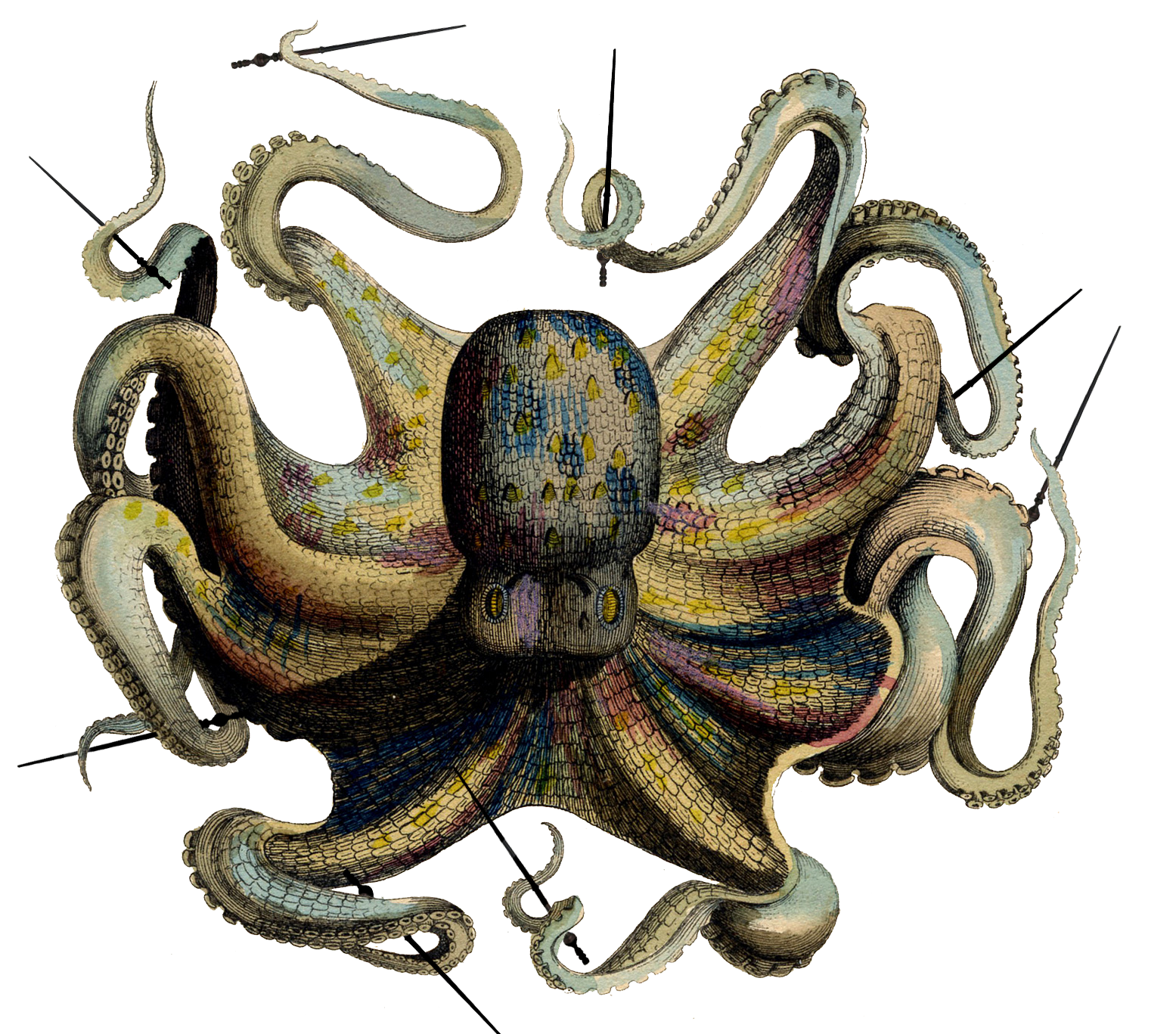2019 Slush
I spent a lot of my time in 2019 solving little problems and coming up with ideas on various forums and Discord servers. With this collected post, I’ll have “recovered” all of my blog posts from that year.
 Collection of Old Cameras, Wilfredo Rafael Rodriguez Hernandez, CC0, via Wikimedia Commons.
Collection of Old Cameras, Wilfredo Rafael Rodriguez Hernandez, CC0, via Wikimedia Commons.
RPS Mechanics in Play-by-Post Games

Rock-paper-scissors only works in person because you can throw more-or-less simultaneously. In a play-by-post environment, someone has to go first. Here’s how:
- Alice generates a random number and appends it to her choice.
Example: “paper04” - Alice takes a hash of the result and shares it.
Example: “md5:fbe1a7f5e0330c5cf5a986d40065a21e” - Bob shares his choice.
Example: “scissors” - Alice shares her original string.
Example: “paper04” - Bob checks the hash of the original string.
This is not a protocol focused on security. For example, given that the salt is a number 00-99, Bob could generate a rainbow table of all the possible checksums and guess Alice’s answer before she revealed it.
It could be automated in some ways if you ran the forum. For example, a bot could automate the final check.
Weighted Selection from a Compact Table
It’s common for a table in a book to be formatted like:
1-10. Very common result
11-15. Less common result
16-19. Slightly less common result
20. Very rare resultThis is useful if you want to mimic a specific type of distribution given a flat input curve. The theory is that if you use this table a lot, then it will make the results feel more natural. This presents a problem if you would like to automatically roll on the table in a spreadsheet. A naive way to do this is to format it like:
(A1) Very common result
(A2) Very common result
(A3) Very common result
…
(A20) Very rare resultBut this is time-consuming and annoying to change. Using VLOOKUP, you can format it like:
(A1) 10 (B1) Very common result
(A2) 15 (B2) Less common result
(A3) 19 (B3) Slightly less common result
(A4) 20 (B4) Very rare resultAnd then roll as normal. This is a (rough) proof of concept. There’s a couple mistakes in it, but if you play around with it you can see how it works. Cols A & B are the actual table, while Cols C & D are for illustrative purposes and aren’t necessary for the table to function. Cols E & F show how an automated roller might function.
What is the volume of a gaseous human?
Assumptions:
- A “standard” adult is 70 kg.
- Standard temperature and pressure.
- 68% of the body is water, and the remaining molecules are large enough to be relatively few in number and therefore negligible.
- If the previous assumption is one extreme, then the other is that the body is 100% water. This will let us bound the possible values.
Then we do some dimensional analysis and bad math (18 ≈ 22.4):
So if a human is 100% water,then they will take up ~70 m3 as a gas, but at the other extreme, they’ll be about ~35 m3 (if we say 68% ≈ 50%).
Spark Tables
I’ve become enamored of Into the Odd’s spark tables. And I’ve been looking for them pre-assembled because I’m lazy. I was pleasantly surprised to find this list of 100 Adjectives Used in Basic English, and sad to discover that it only has 99 adjectives in it. I added the ubiquitous “roll twice and combine” to round it out to a d100 table, but this doesn’t feel great if you were already rolling twice to find unexpected combinations. I might consider subsetting this list as a starting point for my own spark tables.
Troika! Backgrounds Jam
I may never play Troika! proper, but it’s an infectious idea. Similarly, I don’t know if I’ll ever sell my games, but itch.io seems to be where the cool games are these days. The Troika! Backgrounds Jam was apparently the push I needed to throw something together and put it on itch.1 The jam is over, but this clip of how-to seems worth keeping:
 Instructions from Jared Sinclair, used by permission.
Instructions from Jared Sinclair, used by permission.
And here is my entry, loosely inspired by Dial H:
I went ahead and put Bloodring up there too:
Alternate Beholders
 Illus. Tom Wham, © TSR 1977.
Illus. Tom Wham, © TSR 1977.
Something about a beholder demands an answer. “Dungeons & Dragons” is nominally about dragons, but you know you’re really playing D&D when you see a beholder. The 5e Monster Manual has three or four variant beholders. The AD&D Monstrous Manual has twelve. Everyone wants to do their own take.2
So the OSR Discord server was brainstorming alternative “beholders”: burning wheels of eyes, disco-laser robots, etc. And I had what I thought was a pretty good idea, and now a bona fide meme: An Octopus with Too Many Wands. Now that we’ve survived one in Spwack’s game, I thought I’d take the opportunity to share the idea here for posterity. It’s a great monster: it’s weird, it’s dangerous, it’s intuitive, and it makes its own treasure.
 Art by Nate Treme, used with permission.
Art by Nate Treme, used with permission.
These posts were first shared on January 13, July 16, and November 11, 2019. The generator was made with Spwack’s generator generator, for this update.
Looking back at my blogging, I find I am unexpectedly motivated by challenges and competitions, even though I am not a competitive person by nature.↩︎
What I can find on short notice includes:
- The Panopticium (deceased)
- The Lookyloo (deceased)
- The Ones Left Behind
- Improved Beholders (deceased)
- Eavesdropper